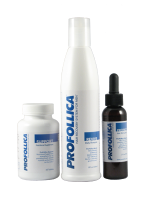Traditional Chinese Medicine
Traditional Chinese Medicine (TCM), traditional healing the Chinese way, is one of the oldest, if not the oldest, forms
of health care systems known to mankind. It dates back and has been in continuous use for over 5,000 years. That's 50 solid centuries!
It grew out of a thorough examination of how everything in the reality of nature works. From the deepest most invisible levels right up to the visible physical levels and the interactions thereof.
It is grounded on the ancient
principles of Taoism, a Chinese philosophical and religious tradition that
emphasizes living in harmony with nature.
You may wonder how such an "old" form of healing can still be relevant today. Well, TCM is still an applicable health therapy because of one reason: It is grounded on timeless, fixed and consistent natural law.
Some of the herbal remedies on this site, e.g Anti-Aging Health, are proof positive of their continued relevance.
Basics of Chinese Traditional Healing
|
TCM has a unique concept of the world and the human body that is very different from western medicine. Humans are perceived as miniature versions of the universe - living beings with distinct organs, tissues and other body components performing very different functions but, at the same time, dependent on one another - as the yin yang symbol (at right) symbolizes. |
The Yin Yang Symbol |
Background and Underlying Concepts
- The Yin-yang theory. Everything in the universe is a balance between the opposite, but at the same time, complementary yin and yang forces that share an interdependent relationship.
- When these two forces go out of balance within your body, the result is ill health. At the most basic level, the goal of TCM therapy is to restore the balance of the yin and yang in you.
- A significant and essential life force/energy called Qi (pronounced Chee) circulates in your body through a system of channels called meridians. Sustaining the balance and harmony in the circulation of Qi in your body ensures continued good health.
- The theory of the five elements (or phases): An all-inclusive guide that organizes all natural phenomena into five principal groups - earth, wood, metal, fire, and water. These elements are analogous to specific organs and tissues in your body and are used to explain how it functions.
- All TCM therapies, be it acupuncture, acupressure, herbal therapy, nutritional healing, qi gong, mind-body therapies e.t.c, are based on the concept of Qi. TCM practitioners use one or an appropriate mix of the various healing therapies to boost and balance your Qi to restore health.
Symptom Checker / Diagnosis
Holistic inquiry and external scrutiny usually provide all the information required for diagnosis of disease.
The four basic types of diagnostic scrutiny are visual examination, listening and smelling, inquiring, and touching. By simply applying these four methods of investigation, accurate assessment of the physical and emotional imbalances of your internal organs can be conclusively established and harmony restored.
Since established and accepted formulas are available for various diagnostic patterns, diagnosis, more often that not, very quickly points to the designated therapy. An accurate diagnosis enables a TCM practitioner to prescribe a remedy, that has proven to be safe and effective for thousands of years.
Types of Traditional Chinese Medicine
Acupuncture and Chinese herbal
medicine are the most commonly used.
- Acupuncture. Blockages in the flow of the life force (Qi) are eliminated by inserting thin metal needles through the skin to stimulate specific points on your body.
- Herbal medicine. The Chinese materia medica (a pharmacological reference book used by TCM practitioners) contains information on hundreds of therapeutic substances (predominantly plant in origin, but also a few animal products and some minerals) grouped by their well-known actions in the human body. Various parts of plants such as the roots, stems, leaves, flowers, and seeds are used. The herbs are combined in formulas and administered as powders, capsules, tinctures, or teas.
Other TCM therapies include acupressure, dietary therapy, Chinese massage, and mind-body therapies such as qi gong and tai chi.
Modern Scientific Validation
TCM
has a long and proven track record of
treating a wide range of health conditions. Unlike conventional medicine, traditional Chinese medicine goes beyond just addressing the symptoms of a
disease. It goes to the source and brings out healing from the inside of your body out.
What the Chinese have learned and observed through practical experience over thousands of years is increasingly being validated by modern scientific investigations and studies.
Nowadays, Traditional
Chinese Medicine is formally taught and practiced
alongside western medicine in many colleges, clinics and hospitals
in
China, in the west, and the rest of the world because
it works.
Read in Your Language
Sign up for our Email newsletter


*** Comments
Have your say about what you just read! Leave me a comment in the box below.